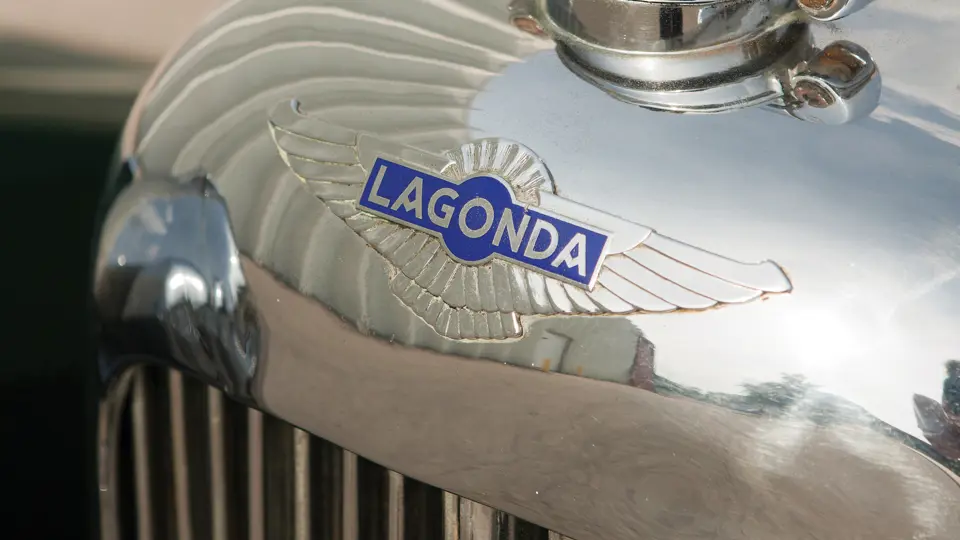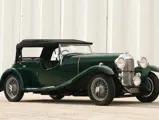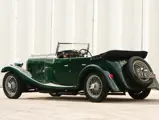68 bhp, 1,991 cc OHV inline six-cylinder engine, E.N.V. four-speed pre-selector transmission, solid front and live rear axles with semi-elliptic leaf springs, and four-wheel mechanical drum brakes. Wheelbase: 120 in.
During the 1920s, Lagonda earned a reputation for quality-built four- and six-cylinder cars of sporting character. The speed model of 1927 was possessed with phenomenal acceleration and was very capable in competition. In 1933, Lagonda began using Meadows engines, which were 4.5-liter units that proved no heavier than their own but produced 50 percent more power. This new M45 model became quite popular, as it offered the performance of a Bentley at a lower price.
At about the same time, the company replaced the four-cylinder model with a comparable car, and they adopted a 1,991-cubic centimeter six-cylinder engine from Crossley Motors Ltd., of Manchester. Lagonda’s stringent engineering and quality control was maintained by disassembling each unit, thoroughly checking it, and then rebuilding it. These cars, designated 16/80, were fitted with twin SU carburetors. Late in 1933, the E.N.V. pre-selector transmission was made available as an option. The model remained in production through late 1934. The Lagonda Club lists the total production as a mere 261 units, of which survivors are quite rare, especially on U.S. shores.
The car offered here wears the desirable, later-style four-seat tourer coachwork, which was built to a racing design by Vanden Plas in Lagonda’s factory works. It also has the early bronze-bodied SU side-draft carburetors and the E.N.V. pre-selector gearbox. It was restored some time ago by Hooe Garage Ltd., of East Sussex, and it has been well-kept and maintained since, featuring a well-detailed engine compartment; good paint, chrome, and top; and leather inside that is gently worn by enthusiastic road enjoyment. Lucas headlamps light the way, while a rear-mounted spare, located on the rear luggage compartment hatch, is available. This sporting Lagonda is reported to run and drive well, and it would be a fun choice for continental touring, either back on its home continent or journeying across North America. It is accepted as a Full Classic by the Classic Car Club of America, and it is, perhaps, the sportiest of CARavan contenders.
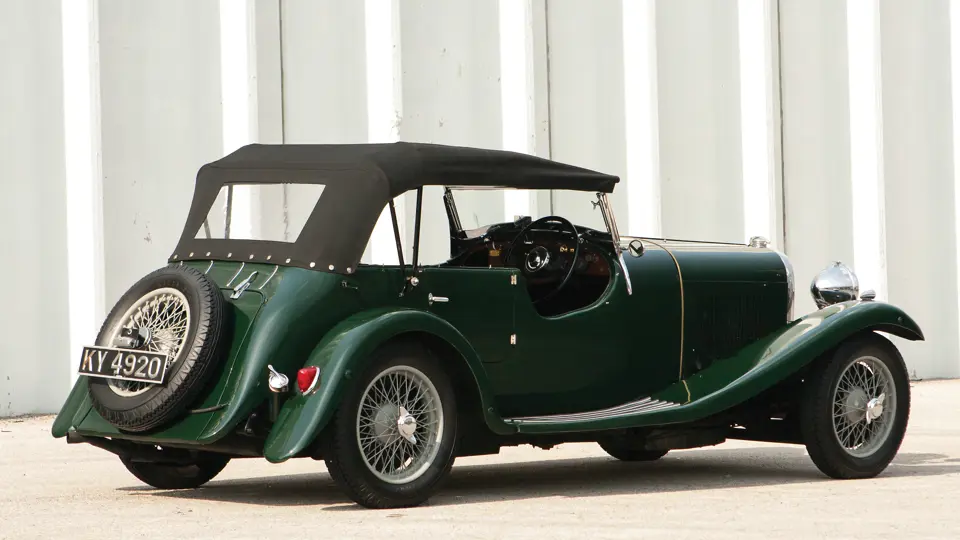



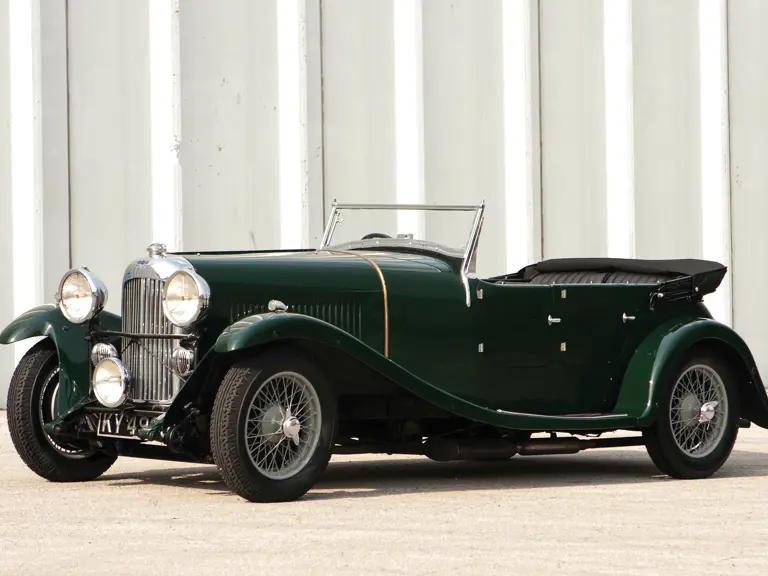
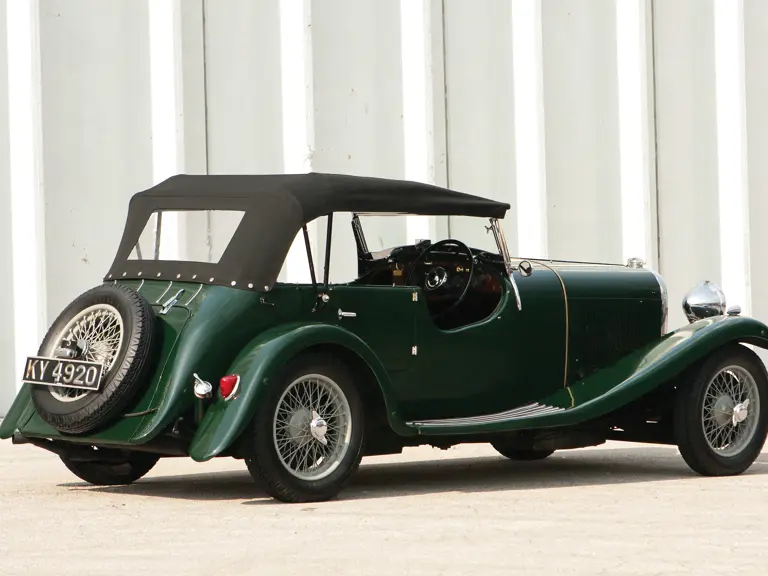
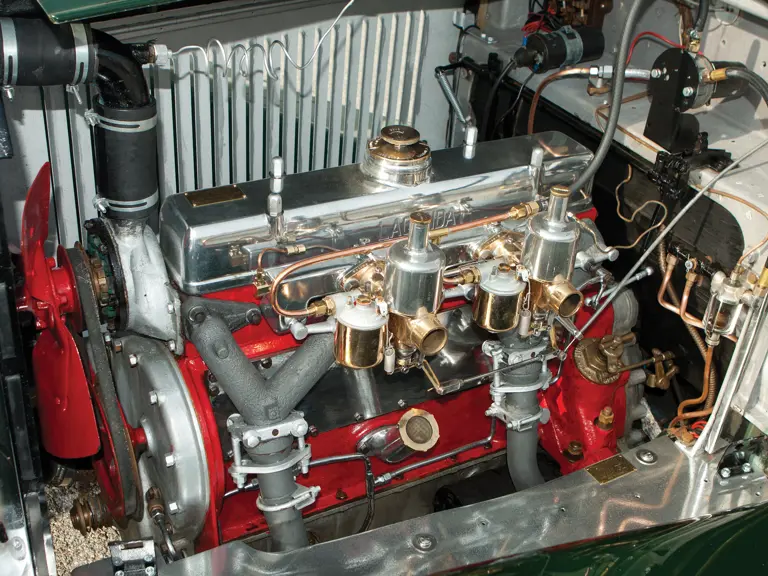

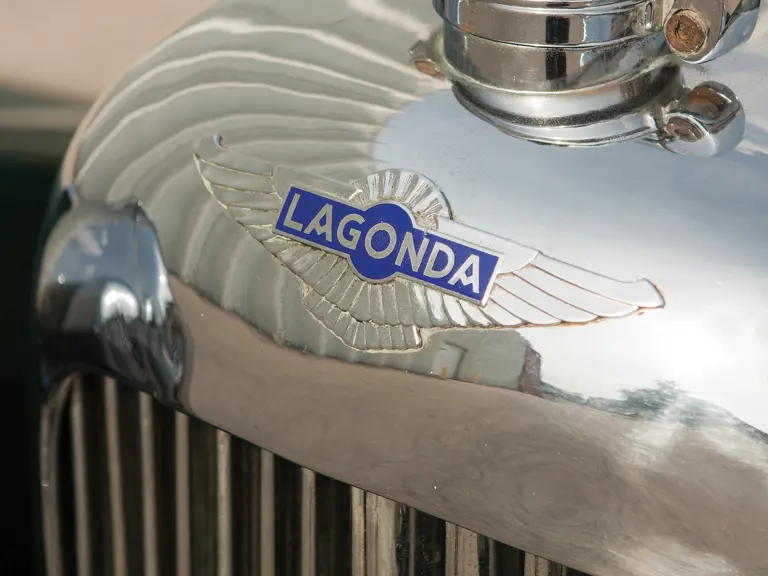
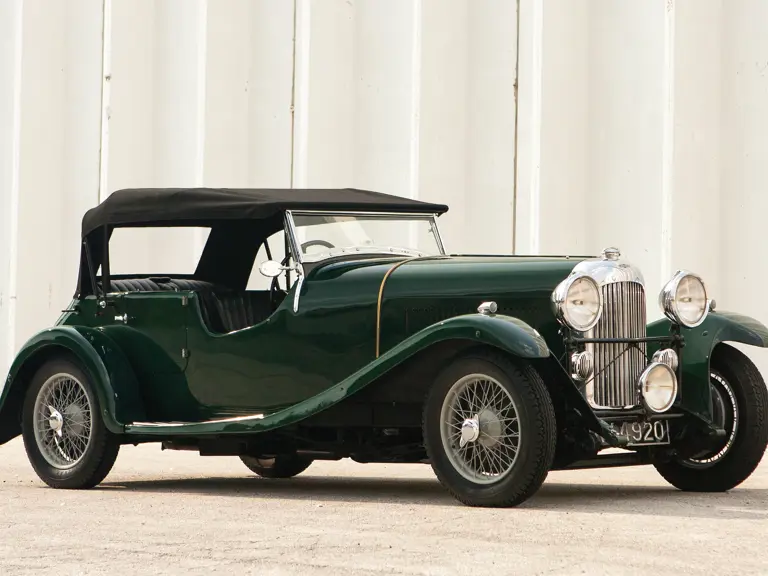

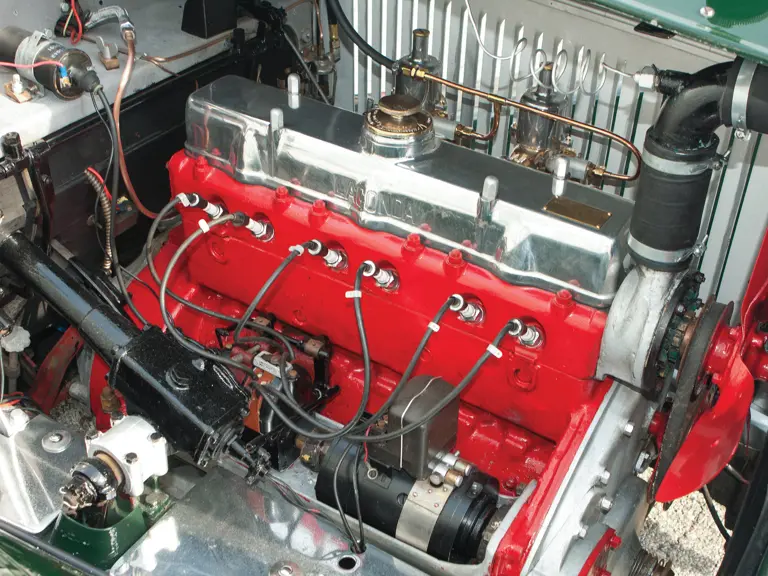

 | Hershey, Pennsylvania
| Hershey, Pennsylvania
